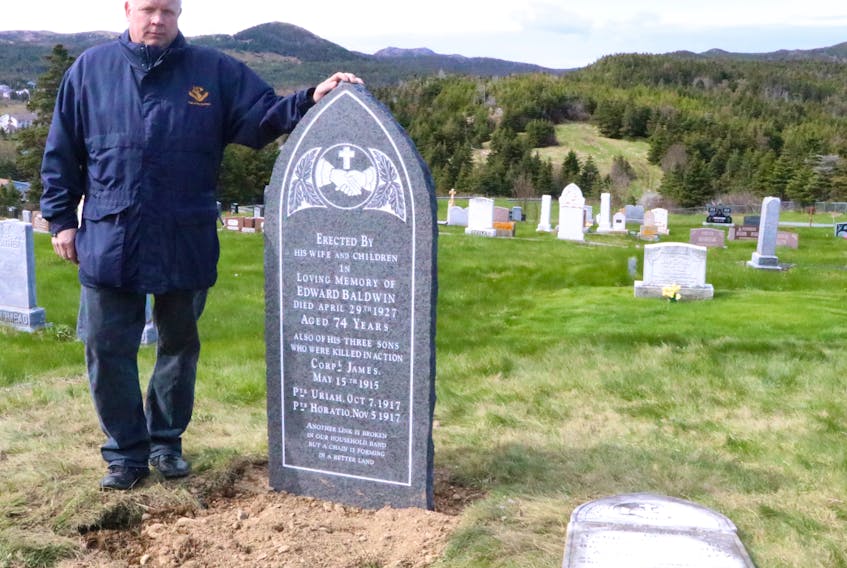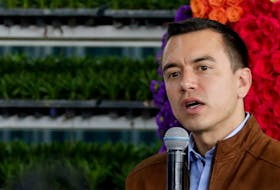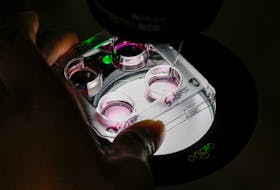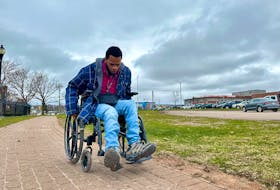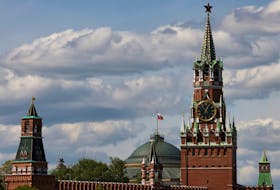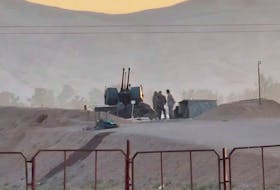When you first hear the story of the Baldwin family of Pouch Cove that lost three sons in the First World War, it might remind you of the storyline of the popular Second World War movie “Saving Private Ryan.”
But in the Baldwin family’s case, there was no special unit formed — such as the one led by Tom Hanks’ character in the movie — to go to the front lines and pull one of the sons to safety so the parents, Edward and Alice Baldwin, wouldn’t suffer such a total, devastating loss.
The Baldwin boys are also unique in that each served in the military of what at the time were different countries.
Cpl. James Baldwin, who had been serving in the United States navy prior to the outbreak of the war in 1914, went to Britain and signed up as a member of the Second Battalion, Royal Irish Fusiliers; Pte. Uriah Baldwin enlisted with the Newfoundland Regiment; and Pte. Horatio Baldwin, who had been working in Montreal at the outbreak of war, enlisted with the 14th Battalion of the Canadian Armed Forces.

All three men were killed during the war and their bodies never found.
A fourth brother, who was born in 1900, would have been too young to sign up.
The weight of the loss of their sons no doubt caused a lot of sorrow for the parents for the rest of their lives.
Edward Baldwin died in 1927 at age 74 and was buried in the All Saints Anglican Cemetery in Pouch Cove. Engraved on his headstone, underneath his name, were the names of his three sons lost in the war.
Over the years, with direct descendants of that Baldwin family no longer living in Pouch Cove, the headstone toppled over and broke into pieces that lie in the grass near Edward’s grave.
The Trail of the Caribou Research Group, in partnership with the Town of Pouch Cove and some descendants of the Baldwin family, will unveil and dedicate a new headstone at the gravesite Saturday in memory of the Baldwin family and their sacrifice during the First World War. The ceremony will be held at 2 p.m. at All Saints Anglican Cemetery, and the public is invited.
Maj. (Ret.) Michael Pretty heads the research group.
He said the group is a not-for-profit volunteer organization dedicated to raising awareness of the accomplishments and sacrifices of Newfoundlanders and Labradorians in military conflicts and peacekeeping missions, and to identifying, visiting and helping preserve their gravesites and memorials.
Pretty became emotional Friday at the site when talking about Saturday’s ceremony and what it means to honour and respect all those who fought in the First World War, and in particular to restore the memory of the Baldwin family this weekend.
“It tells a story that people don’t remember,” Pretty said. “Those are the stories that, as a people, we need to keep alive.
“Ian Parsons is our head historian. He found this link with the three Baldwin brothers years ago, but it wasn’t until a couple of years ago that we stumbled upon the grave. Our sole purpose is to help people remember what Newfoundlanders and Labradorians did in foreign conflicts and peacekeeping missions.
“This is the first one we’ve completed and will dedicate with a ceremony. We fundraised amongst ourselves for this stone, and the town installed it, and we hope it will generate interest in the public so we can raise the money to do the rest of them.”
In addition to the three Baldwin brothers, their two first cousins were also killed in the First World War, along with other Baldwins — likely distant relatives — from Pouch Cove. The town’s war memorial lists all the Baldwin names.
The research group has gathered some information on each of the Baldwin boys.
Cpl. James Baldwin left home to work with the United States navy, but with war imminent wanted to be a part of it and went to Britain. He travelled to Liverpool, where he enlisted with the Royal Irish Fusiliers. He was killed on May 15, 1915 after being hit with shrapnel while in a trench in Belgium. Just a day before, he had been commended for his bravery, with a mention in dispatches.
Pte. Uriah Baldwin was a fisherman in Pouch Cove when the call came for recruits for the Newfoundland Regiment. He enlisted with the regiment in September 1915. The record shows that he was wounded in battle at Gueudecourt, France, in October 1916. A year later, he was listed as killed in action at Broenbeek on Oct. 9, 1917, just 18 years of age.

Pte. Horatio Baldwin had left Newfoundland for Montreal to find work when he was a young man. His job just before the outbreak of the war is described as an elevator man. On Nov. 6, 1916 he enlisted with the 14th Battalion of the Canadian Armed Forces. Records show he was 21 years old at the time, and asked the forces to direct part of his pay to his mother in Pouch Cove. In Europe, his battalion became entrenched in Wieltje near Ypres, Belgium, where on Nov. 5, 1917 he was listed as missing and presumed dead.
Pretty said he got involved with the Trail of the Caribou Group at first to help deal with his post-traumatic stress disorder (PTSD). Pretty was diagnosed with the condition some years after returning from peacekeeping missions.
“This was my coping mechanism at first. Now I’m just obsessed with it,” he said. “After a tour in Bosnia, I became an angry person. It affected my home life and caused my first marriage to break up. I got help finally, and gradually I became better and learned to deal with it, and I would consider myself 90 per cent functional right now. I saw a lot of misery and dead children and dead bodies. The capacity of human beings to be mean to each other is inconceivable at times.”
Pretty and his friends and group members have visited hundreds of graves and memorials to Newfoundland and Labrador’s war dead. The group also wants to ensure that those who returned from the wars, and died later, are remembered for their sacrifice as well.
The group has a Facebook page and plans are in the works for a website that will include all the research and projects the group is involved in.

